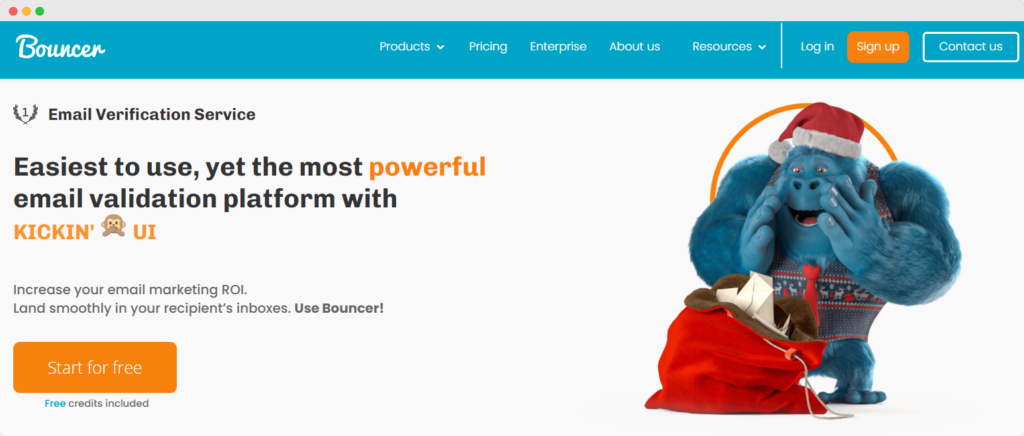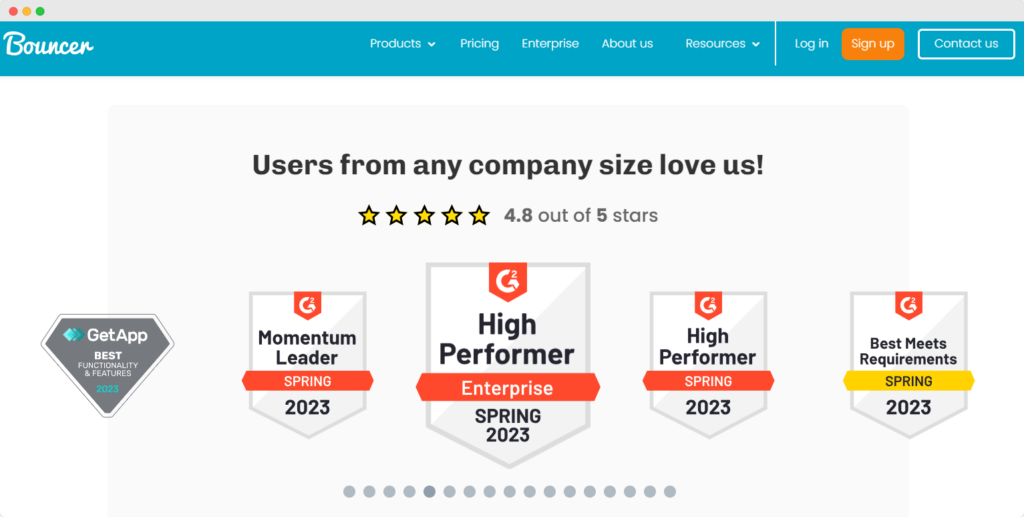The Most Important Email Engagement Metrics For Campaigns
Are you an email marketing professional who’s tired of lackluster email campaign engagement?
You’re in the right place.

Maybe it’s time to shift focus to what truly matters – your email engagement metrics.
Are you wondering where the problem might lie? The answer might just be a click away.
Let’s get right in and check out the secrets to revamping your email campaigns for good.
What is email engagement?

Email engagement is like a conversation between you and your audience. It’s about how much they interact with your emails – from opening and clicking to subscribing or unsubscribing. High engagement means they’re interested and actively participating. It’s not just sending emails – it’s about creating a connection that keeps them engaged and looking forward to your messages.
Why does it matter?

You should be interested in nailing your email engagement metrics for a series of reasons.
Generally speaking, if you are, you could improve many aspects of your email marketing efforts:
Boosted sender reputation
When your audience engages with your emails by opening, clicking, and not marking them as spam, it’s like a thumbs-up to the email gods.
Internet service providers notice this positive interaction, and it boosts your sender reputation.
How does this benefit you?
Your marketing team’s emails are more likely to land in the recipient’s inbox rather than the dreaded spam folder.
Improved email deliverability
Engaged audiences tell internet service providers that your emails are welcome.
This translates to better deliverability, all so that your email marketing campaigns reach their destination.
How does this benefit you?
For example, Apple Mail users will find your email campaign shining in their inboxes instead of hiding in spam.
Enhanced conversion rates
Engaged recipients are more likely to take the desired actions, like clicking through or making a purchase.
This engagement metric directly influences your conversion rate.
How does this benefit you?
Your email marketing team’s efforts pay off as more subscribers turn into customers.
Optimized subject lines
Email engagement tells you if your subject lines hit the mark.
If people open your emails, your subject lines are doing their job. If not, it’s time for your marketing team to tweak and test.
How does this benefit you?
Catchy subject lines grab attention, which leads to higher open rates.
Reduced spam complaints
When people engage with your emails, they’re less likely to mark them as spam.
It’s like a shield protecting your email campaign from the spam folder.
How does this benefit you?
Your marketing team avoids the headache of dealing with spam complaints. This, as a result, gives you smooth sailing for future campaigns.
Elevated click-through rates
Engaged recipients not only open but also click through.
This positively impacts your click-through rate, a crucial email marketing metric.
How does this benefit you?
Your email campaign becomes a success story as more people actively explore the links you provide.
In essence, email engagement is the heartbeat of your email marketing strategy. It helps make sure your emails don’t just get delivered, but also resonate with your audience. As such, your marketing efforts are more effective and your team’s efforts are truly impactful.
9 most important email marketing metrics for the best engagement

So to be certain that your email engagement is spot on, you need to pay attention to a couple of metrics.
Especially for you, we’ve compiled a list of the top ones we believe should be on your radar.
Those are:
Bounce rate
Bounce rate signifies the percentage of emails that couldn’t reach the intended inbox. A high bounce rate means your messages might not be landing where they should.
Calculation:
Bounce rate = (Number of bounced emails / Number of sent emails) * 100
Why it matters:
A lower bounce rate ensures your messages successfully navigate through email obstacles.
Subscribe and unsubscribe rate
The subscribe rate reflects new additions to your email list, while the unsubscribe rate indicates departures. Monitoring both helps gauge your email content’s appeal.
Calculation:
Subscribe rate = (Number of new subscribers / Number of sent emails) 100
Unsubscribe rate = (Number of unsubscribers / Number of sent emails) 100
Why it matters:
High subscribe rates show your content is attracting interest, but keep an eye on unsubscribes to avoid losing your audience.
Open rate and unique open rate
Open rate reveals the percentage of recipients who opened your email, while unique open rate counts each opener just once.
Calculation:
Open rate = (Number of opened emails / Number of delivered emails) 100
Unique open rate = (Number of unique opens / Number of delivered emails) 100
Why it matters:
High open rates indicate engaging subject lines, and unique open rates reveal how many individuals interacted with your message.
Spam complaint rate
The spam complaint rate shows the proportion of recipients marking your email as spam.
Calculation:
Spam complaint rate = (Number of spam complaints / Number of delivered emails) * 100
Why it matters:
A lower spam complaint rate keeps your emails in the preferred inbox section.
Conversion rate
Conversion rate measures the percentage of recipients who took the desired action after opening your email.
Calculation:
Conversion rate = (Number of conversions / Number of delivered emails) * 100
Why it matters:
A higher conversion rate signifies that your email content is compelling enough to prompt the desired response.
Deliverability rate
The deliverability rate signifies the proportion of emails that successfully reach the recipients’ inboxes.
Calculation:
Deliverability rate = (Number of delivered emails / Number of sent emails) * 100
Why it matters:
A high deliverability rate has the power to make your emails reach their intended destinations without issues.
Click-to-open rate
Click-to-open rate reflects the percentage of recipients who clicked on your email after opening it.
Calculation:
Click-to-open rate = (Number of clicks / Number of opened emails) * 100
Why it matters:
A higher click-to-open rate indicates that your content is engaging for those who opened your email.
List growth rate
List growth rate measures how quickly your email list is expanding.
Calculation:
List growth rate = [(Number of new subscribers – Number of unsubscribes) / Total number of subscribers at the start] * 100
Why it matters:
A positive list growth rate indicates a healthy increase in your audience.
Revenue per email
Revenue per email quantifies how much revenue your emails generate.
Calculation:
Revenue per email = Total revenue from email marketing / Number of delivered emails
Why it matters:
A higher revenue per email can mean that your email campaigns are effectively contributing to your overall revenue.
Forward rate
The forward rate measures the number of times recipients share your email with others by forwarding it.
Calculation:
Forward rate = (Number of times an email is forwarded / Number of delivered emails) * 100
Why it matters:
A high forward rate signals that your content resonates enough for people to pass it along. As such, it expands your reach organically.
Social share rate
Social share rate tracks how often recipients share your email content on social media.
Calculation:
Social share rate = (Number of social shares / Number of delivered emails) * 100
Why it matters:
Increased social shares extend your email’s visibility beyond the inbox. Thanks to that, you can amplify its impact and potentially attract new subscribers.
Reply rate
Reply rate calculates the percentage of recipients who respond directly to your email.
Calculation:
Reply rate = (Number of replies / Number of delivered emails) * 100
Why it matters:
A strong reply rate indicates a two-way conversation. Eventually, that will foster a deeper connection and engagement with your audience.
Inactive subscriber rate
The inactive subscriber rate identifies the percentage of subscribers who haven’t engaged with your emails over a specified period.
Calculation:
Inactive subscriber rate = (Number of inactive subscribers / Total number of subscribers) * 100
Why it matters:
Managing and reducing inactive subscribers helps maintain a healthier and more engaged email list.
List churn rate
The list churn rate calculates the overall turnover of your email subscribers, including unsubscribes and bounces.
Calculation:
List churn rate = (Number of unsubscribes + Number of bounces / Average total number of subscribers) * 100
Why it matters:
Keeping an eye on list churn helps you understand the health of your subscriber base and identify areas for improvement in engagement strategies.
Customer retention rate
Lastly, the customer retention rate focuses on retaining existing customers through targeted email campaigns.
Calculation:
Customer retention rate = [(Number of customers at the end of a period – Number of acquired customers during that period) / Number of customers at the start of that period] * 100
Why it matters:
A high customer retention rate signifies successful engagement efforts. This can lead to increased loyalty and long-term value.
Improve your email marketing strategy with Bouncer

You’ve crafted that perfect email, pouring your heart and soul into every word.
Now, imagine it never reaches your audience.
That’s where Bouncer steps in, not as a superhero but as your email’s trusted sidekick.
Here’s how it transforms your email marketing game:
Why verify your list with Bouncer?
The email marketing process kicks off with crafting your message. However, the success of your campaign relies on emails being delivered to your recipients.
With email list verification, your recipients receive your emails. This happens because of confirming the deliverability of each address.
Thanks to verifying syntax, checking DNS and MX records, as well as using AI-driven algorithms, Bouncer makes sure your emails won’t bounce. Now, we do know a thing or two when it comes to safeguarding your sender reputation.
Securing deliverability
In the broad digital sphere, competing for attention, your email’s deliverability is crucial.
Poor email list quality can harm your sender reputation, leading to decreased deliverability with each bounce.
Bouncer acts as your shield because it prevents such setbacks.
Boosting engagement rates
Email marketers aim for engagement. Invalid emails won’t engage with your content.
Bouncer’s verification makes your emails reach the right audience. What does this mean? Well, we can most definitely impact your open and click rates positively.
Saving time and energy
Sending campaigns to invalid recipients not only costs you but may lead to blacklisting, consuming valuable time.
Now, we know that time is of the essence when it comes to email marketing.
How to prevent that? Simply let Bouncer handle verification, all so that you can focus on growth.
Bouncer’s special powers
We’ve got a number of really interesting aspects at your disposal. We believe these might tickle your fancy as a marketing professional:
Bounce estimate
This functionality predicts potential bounces after your campaign is sent. As a result, it provides insights for proactive decision-making.
In the email marketing process, understanding potential hurdles is key. You can anticipate and address potential issues, as well as fine-tune your email list for optimal results.
Free email verification sampling
We offer a free sampling service. Basically, we allow you to test your list’s quality without full verification.
In the email marketing process, identifying lists safe for sending is definitely a strategic move. You can identify lists safe for sending, reducing the time and cost associated with unnecessary verifications.
Data safety
Bouncer is fully GDPR compliant, with data centers in the EU and hashed emails for added security.
In the realm of email marketing, where data safety is paramount, your data is safeguarded. No more worrying about compliance with Bouncer’s verification process.
Why Bouncer wins
- Best accuracy: Bouncer boasts top-notch email verification accuracy.
- Free credits: in email marketing campaigns, testing tools is essential. Test the tool with 100 free email verification credits to experience its power firsthand.
- Superb support: email marketers appreciate excellent support. Reach out via email, chat, or even in person for any questions or assistance.

Do you like the way it all sounds? Give Bouncer a try today and never look back at the old ways of email marketing.
A new outlook on email campaigns
Now, you’re pretty much ready to make your next email marketing campaign shine.
Equipped with these engagement metrics, you’ll see tremendous improvements all over.
Keep these in mind next time you’re about to launch a campaign.
Also, for spot-on deliverability – choose Bouncer.
Happy mailing!






